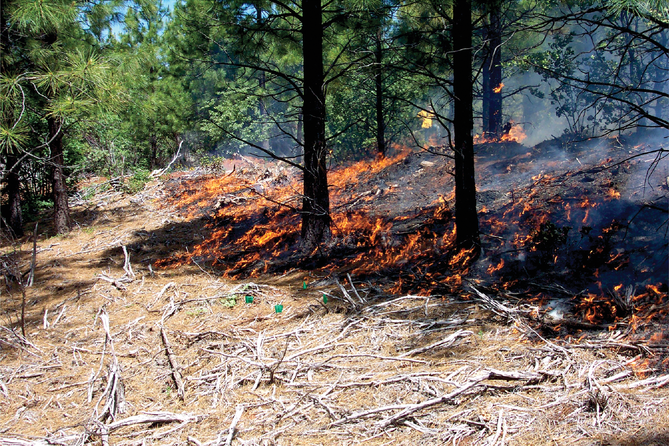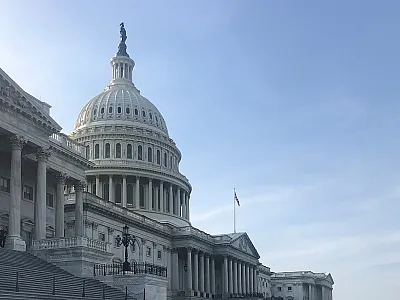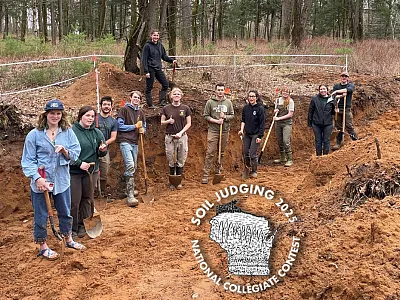Forest Soil Tolerates High-temperature Burning

Devastating wildfires continue to threaten forests and communities in the western U.S., with dramatic increases in fire frequency, intensity, and acreage burned in recent decades. Prescribed burning is a preferred means to reduce unwanted fuel buildup in order to reduce the occurrence of uncharacteristically large wildfires and to help return natural disturbance processes to the forests. However, it’s important to look at how effective prescribed burning is, particularly when fuel loads are heavy and when trying to limit heat damage to soils.
In a recent Soil Science Society of America Journal study, USDA Forest Service scientists examined changes in key soil properties during severe burning. Experimental burns produced a range of soil temperatures reaching as high as 450 °C. Loss of soil carbon and nitrogen was nominal across the heating gradient with the exception of a partial loss of microbial carbon at higher temperatures that was restricted to the top few centimeters of mineral soil.
These findings demonstrate, for the most part, the tolerance of soil nutrient and biological properties to high-temperature burning. They also provide evidence that prescribed burning effectively reduces heavy fuel buildup without causing excessive heat damage to soil.
Adapted from Busse, M., Shestak, C.J., & Hubbert, K.R. (2022). Soil nutrient release and microbial changes after burning of masticated fuels. Soil Science Society of America Journal. https://doi.org/10.1002/saj2.20489
Text © . The authors. CC BY-NC-ND 4.0. Except where otherwise noted, images are subject to copyright. Any reuse without express permission from the copyright owner is prohibited.













